Lexicons and Rules
Philippine Language Books at King’s College
By Maria Cristina Juan
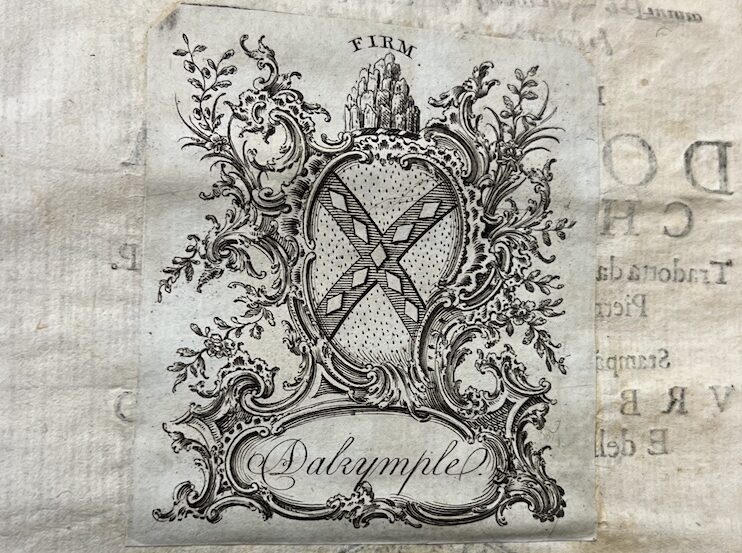
This whole project really began at the archives of the Maughan Library at King’s College in London. It was there that I first saw the elaborate bookplate of Alexander Dalrymple, Scottish hydrographer for the East India Company and Governor General of the Philippines for a brief time during the British Invasion of Manila from 1762-1764. It was this bookplate that would send me pin-balling through the cache of materials that came from the San Agustin library to where they had landed in various parts of the globe. The Maughan library’s practice of writing out very detailed research on the provenance of their rare books and manuscripts first allowed me to identify the volumes in the Marsden Collection that came from Dalrymple’s library, and from there, door after door would open and allow us to reassemble one of the great lost libraries of the Spanish Empire.
There are several volumes in the Marsden Collection that carry Dalrymple’s bookplate. It is a mixture of all sorts of materials – from the histories of the Mongols to Aaron Hill’s history of the Ottoman Empire. The collection also includes a signed copy of Dalrymple’s own book entitled A Historical Collection of the Several Voyages and discoveries in the South Pacific Ocean. Volume 1 is a collection of accounts of voyages that Dalrymple translated from Spanish documents captured in the British occupation of Manila in 1762. The signed copy at King’s College has a dedicatory note from Dalrymple to Captain Richard Kempenfeldt. The then Captain Kempenfeldt was with Alexander Dalrymple during the British occupation of Manila in 1762, and is famous for having hand-carried the copper plates of the Pedro Murillo Velarde Map as a present to the King in London. The ink inscription on the half-title suggests that the volume was passed from Dalrymple to Kempenfelt, and then to Marsden after Kempenfelt’s death (“who, then being an admiral, was lost in the Royal George”).
The Philippine Materials

The bulk of Dalrymple’s books in the Marsden Collection, are dictionaries and grammars of several Philippine languages. Given that William Marsden was known for his linguistic studies of Austronesian languages, (he had written a dictionary of the language of Sumatra and also some comparative studies of Austronesian scripts including the Baybayin), it is very likely that Marsden borrowed the volumes on Philippine languages from Dalrymple’s library. Dalrymple’s handwritten note on the inside of the Mattheo Sanchez’s Vocabulary de la Lengua Bisaya reads: “ This book is presented to William Marsden, Esq. on condition that if his collection of languages is separated, or sent out of England, it shall be returned to the library of his affectionate friend.” The label is signed in ink with “ Dalrymple, 11th Febry 1800 High-Street Marybone.” Below this signature is another ink inscription which reads:
“ Subsequently bequeathed to WM by Will.”
Alexander Dalrymple died on 9 June 1808 at the age of 71, in his house at 57 High Street, Marylebone. His will does, in fact, state that he was bequeathing some volumes from his library to Marsden. We can only assume that this bequest occurred before the massive multi-day auction of Dalrymple’s famous library, held a few months after his death.
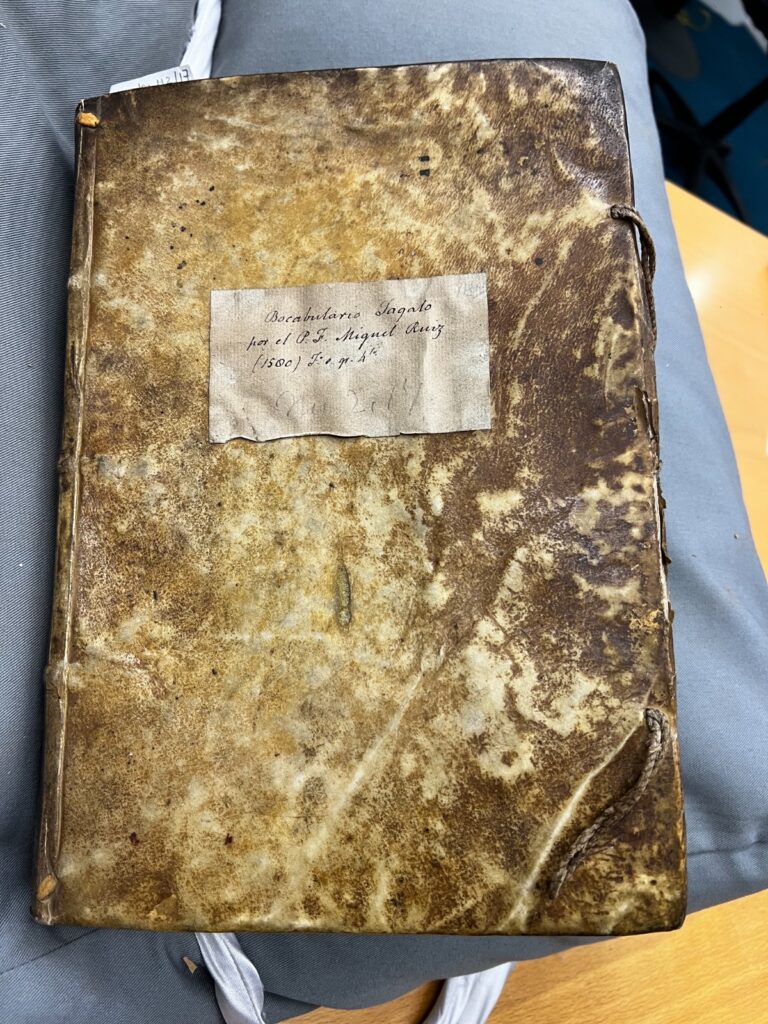 These are the volumes on Philippine languages from Dalrymple and later bequeathed to Marsden:
These are the volumes on Philippine languages from Dalrymple and later bequeathed to Marsden:
1) Vocabulary de la Lengua Tagala by Domingo De los Santos (d 1695) printed in Tayabas Philippines in 1703. Inscribed on the final printed page is a short prayer in Tagalog.
2) A manuscript entitled Arte de la Lengua Tagala written in 1697 by an unknown author.
3) A manuscript entitled Bucabulario tagalo by P.F. Miguel Ruiz (d. June 7 1630) This volume seems to have never been published.
4) Arte de la Lengua Pámpanga by Diego Bergaño ( 1690-1747) printed by the Convento de Nra. Señora de Loreto de el Pueblo de Sampaloc in 1736.
5)Vocabularia de la Lengua Bisaya by Mattheo Sanchez (1562-1618) printed by the Colegio de la Sagrada Compania de Jesus in Manila by Gaspar Aquino de Belen in 1711.
6) A manuscript entitled Bucabulario Yloco by Francisco Lopez written after 1631. Lopez was a missionary of the order of St Agustin and he published the “Doctrina Christiana of Cardinal Bellarmino into Ilocano.
The Prólogo of the Vocabulario de la lengua Ilocana (1849), along with the manuscript sources, provides the following information (translated by W.H. Scott in correspondence with King’s College London):
“Francisco López … applied himself diligently to making his vocabulary from Romance into Iloco, after having printed his Bellarmino and his Grammar; but due to an early death … he was unable to print it or to make the vocabulary he intended of Ilocano into Castilian. This latter, completed by the retired Fray José Carbonel and circulated under the name Thesaurus, was amended and enlarged by Fray Miguel Albiol, minister of the town of Batac, of which we have many copies in this Ilocano province—but none of them printed, and all full of errors… The Superiors … decided to give priority to collecting a common vocabulary, … which could, by means of the press, be kept free of such errors…”
Signed: Fr. Andrés Carro, 1794.
No printed copy of this 1621 manuscript appears to exist. Its relationship to the Vocabulario de la lengua ilocana and the Arte de la lengua iloca remains unclear.
The Marsden Collection's Dispersal
William Marsden presented his entire library of books and manuscripts to King’s College in 1835. In 1918, about a third of the collection was transferred to other colleges within the University of London—primarily the School of Oriental and African Studies (SOAS) for material in “Oriental” languages, and the School of Slavonic and East European Studies.
The material at SOAS that has been identified as part of the ransacked San Agustin Library in Manila (and which also bears Dalrymple’s bookplate) includes a manuscript of Alonso Mentrida’s (1559–1637) Vocabulario de la lengua Bisaya Hiligueyna y Haraia de la Isla de Panai y Sugbu. The manuscript is dated circa 1628 and was later printed by Manuel y de D. Felis S. Dayot in 1841.
SOAS also received most of the Malay manuscripts, as well as comparative studies on Austronesian scripts, including those on the Baybayin of the Tagalogs and of Pampanga. There appears to be no clear explanation as to why most of the Philippine language dictionaries remained at King’s College while only one was sent to SOAS. Perhaps it was an early indication of the exclusion of the Philippines from the broader study of Southeast Asia, given that it was not part of the British Commonwealth.
Gaining Greater Visibility
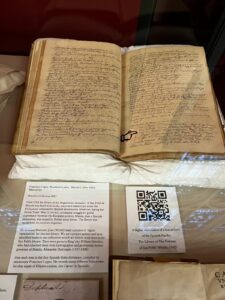 With a bit more exposure through the AHRC-NEH grant, some of the materials from the 1762archive have been highlighted in various exhibits and conferences. From 20 September 2022, to 12 March 2023, the Maughan Library curated An open book: the Foyle unfolded at the Weston Room. The exhibition highlighted rare books, manuscripts and other items from the 16th century and included the Bucabulario yloco . It also created a QR code linking to the 1762 archive project website with posts on social media. Ms Katie Sambrook, Head of Special Collections at the King’s College Library, curated the show.
With a bit more exposure through the AHRC-NEH grant, some of the materials from the 1762archive have been highlighted in various exhibits and conferences. From 20 September 2022, to 12 March 2023, the Maughan Library curated An open book: the Foyle unfolded at the Weston Room. The exhibition highlighted rare books, manuscripts and other items from the 16th century and included the Bucabulario yloco . It also created a QR code linking to the 1762 archive project website with posts on social media. Ms Katie Sambrook, Head of Special Collections at the King’s College Library, curated the show.
In the same vein, the 2022 Annual Philippine Studies Conference at SOAS, with its focus on the Visayan Region of the Philippines, created a digital exhibit of Visayan words culled from the Mentrida dictionary. As an example, Mentrida records the Visayan term for “fierro” or iron as PUTHAO or its variant spelling POTHAO. He specifies that this is “fierro por labran” or iron for working. Some scholars have pointed out the Chinese origin of this native term. Mentrida also includes the use of the term for “soil with iron content” as in “puthaonon na duta.” Other uses of the word in Mentrida’s lexicon seem more metaphorical – for example that of a person with iron content (puthaonon nga tao).  Aside from Puthao, there are various terms recorded for bladed weapons that would have had some iron content. The dictionary was likewise used for other Visayan linguistic categories for raw materials and processes used for the production of culturally significant objects. The digital exhibit can be accessed through https://kaagi.philippinestudies.uk/exhibition/.
Aside from Puthao, there are various terms recorded for bladed weapons that would have had some iron content. The dictionary was likewise used for other Visayan linguistic categories for raw materials and processes used for the production of culturally significant objects. The digital exhibit can be accessed through https://kaagi.philippinestudies.uk/exhibition/.
VIEW OTHER FEATURED TEXTS
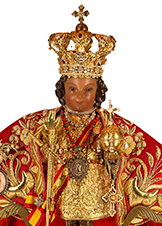
The Theft of the Golden Cross of the Santo Niño
An India and Esclavo at the crossroads between communities
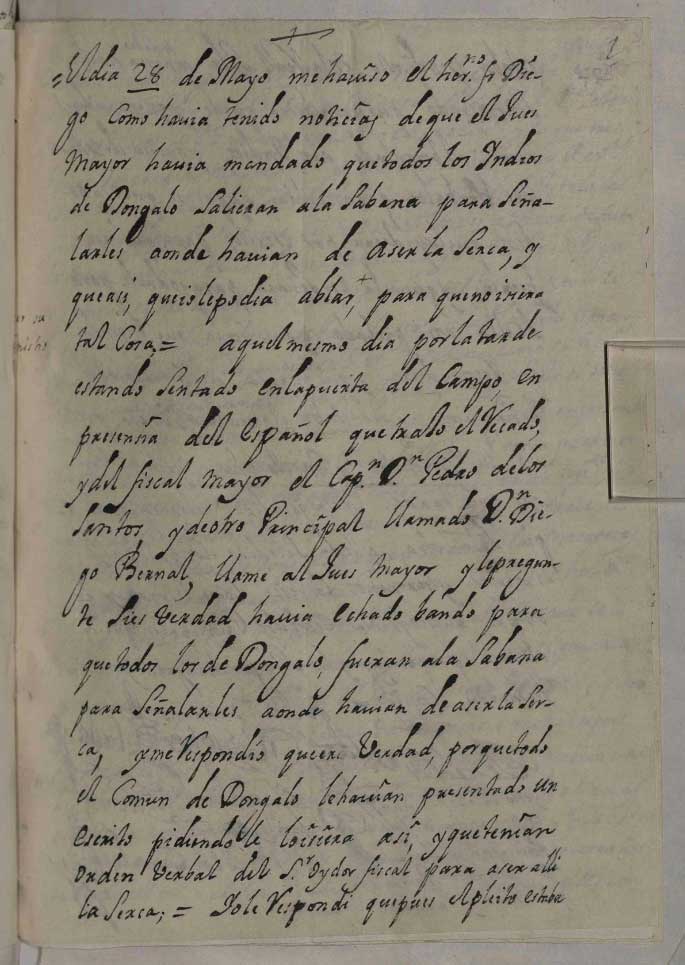
Upheaval and Indigenous Resistance in Dongalo
In May of 1717, a physical skirmish broke out in Dongallo, a town just south of Manila between a group of local principales and Augustinian officials over where the line between their property really was